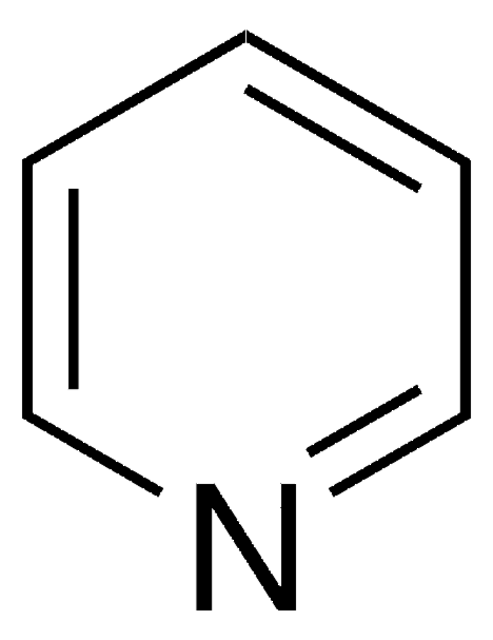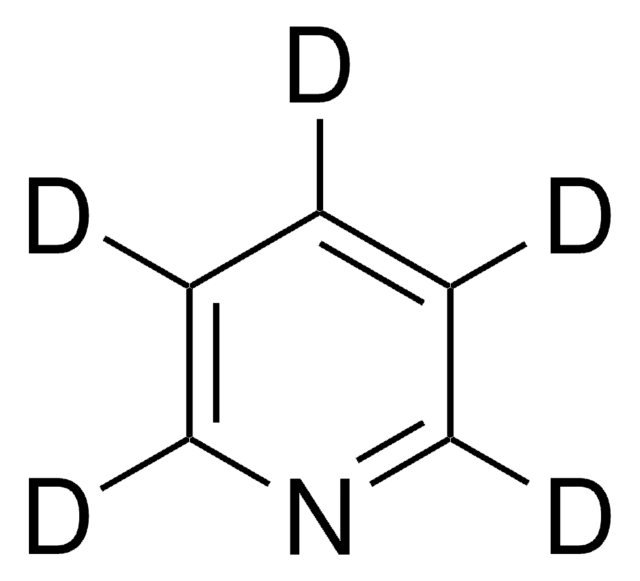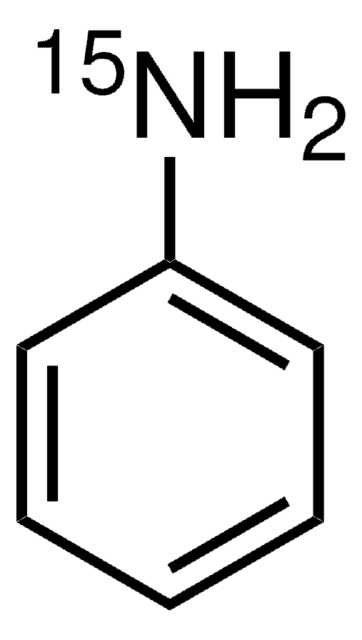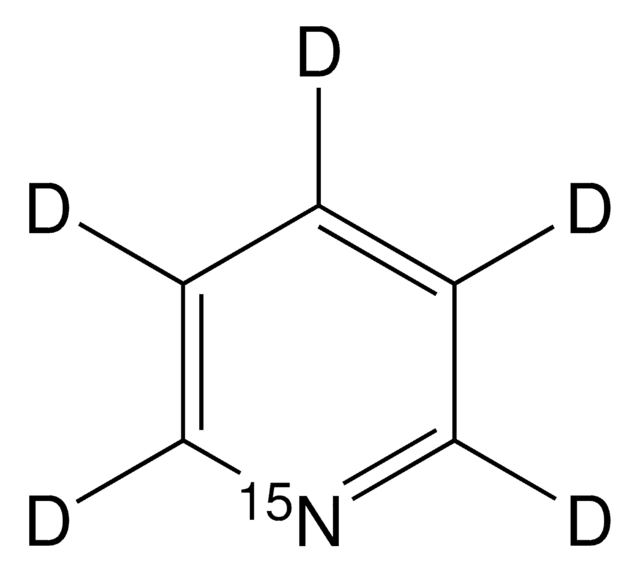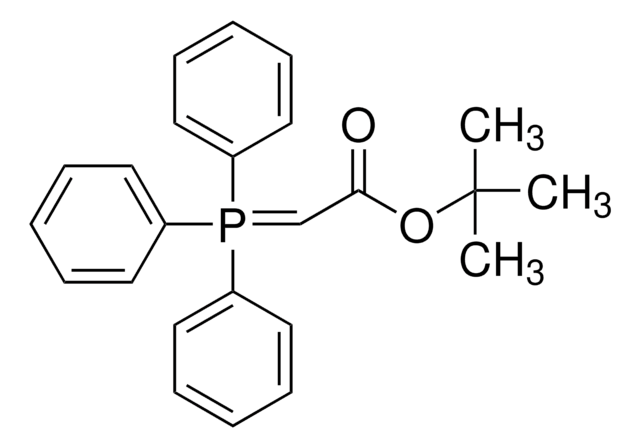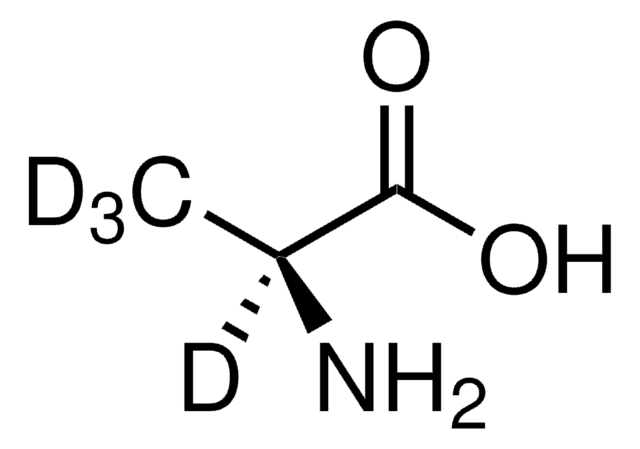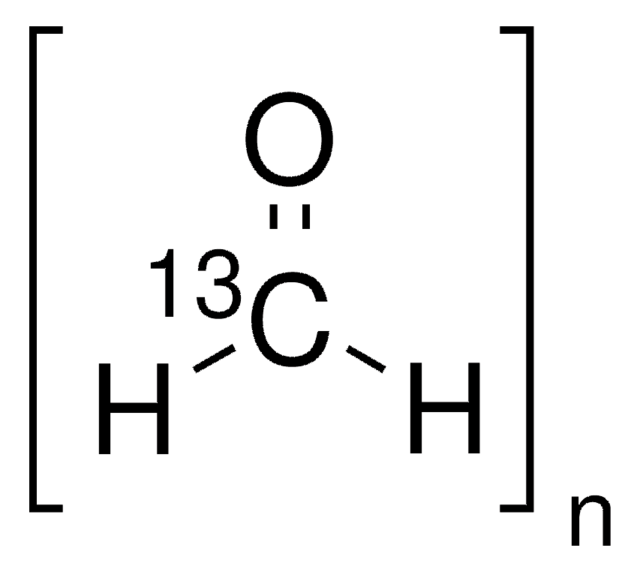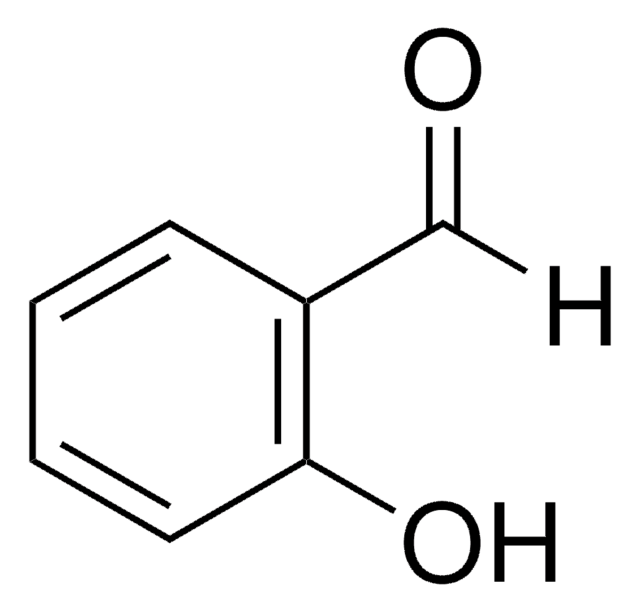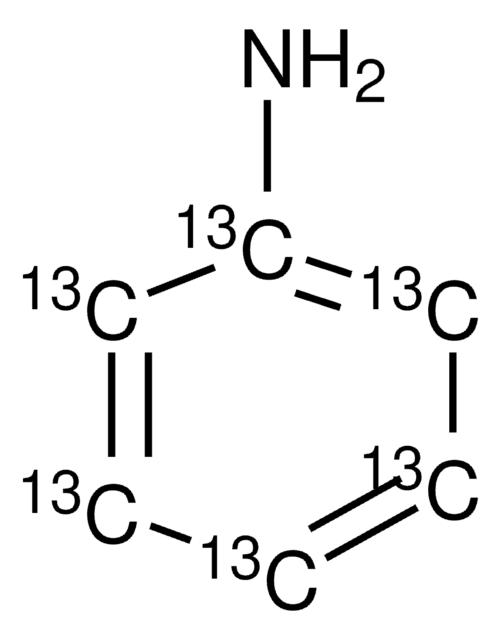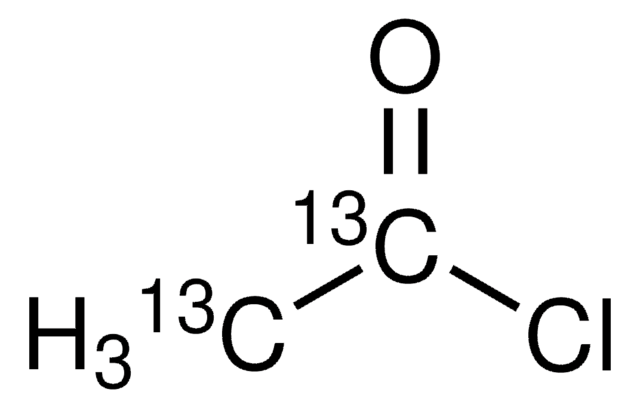All Photos(1)
About This Item
Empirical Formula (Hill Notation):
C5H515N
CAS Number:
Molecular Weight:
80.09
MDL number:
UNSPSC Code:
12352116
PubChem Substance ID:
NACRES:
NA.12
Recommended Products
vapor pressure
10 mmHg ( 13.2 °C)
Quality Level
isotopic purity
98 atom % 15N
Assay
99% (CP)
bp
115 °C (lit.)
mp
−42 °C (lit.)
density
0.990 g/mL at 25 °C
mass shift
M+1
SMILES string
c1cc[15n]cc1
InChI
1S/C5H5N/c1-2-4-6-5-3-1/h1-5H/i6+1
InChI key
JUJWROOIHBZHMG-PTQBSOBMSA-N
Related Categories
Packaging
This product may be available from bulk stock and can be packaged on demand. For information on pricing, availability and packaging, please contact Stable Isotopes Customer Service.
Signal Word
Danger
Hazard Statements
Precautionary Statements
Hazard Classifications
Acute Tox. 4 Dermal - Acute Tox. 4 Inhalation - Acute Tox. 4 Oral - Eye Irrit. 2 - Flam. Liq. 2 - Skin Irrit. 2
Storage Class Code
3 - Flammable liquids
WGK
WGK 2
Flash Point(F)
68.0 °F - closed cup
Flash Point(C)
20 °C - closed cup
Regulatory Information
危险化学品
Choose from one of the most recent versions:
Already Own This Product?
Find documentation for the products that you have recently purchased in the Document Library.
Danila A Barskiy et al.
The journal of physical chemistry letters, 9(11), 2721-2724 (2018-05-10)
Hyperpolarization techniques based on the use of para-hydrogen provide orders of magnitude signal enhancement for magnetic resonance spectroscopy and imaging. The main drawback limiting widespread applicability of para-hydrogen-based techniques in biomedicine is the presence of organometallic compounds (the polarization transfer
Yiling Chen et al.
Environmental science & technology, 50(1), 249-258 (2015-12-05)
A combined experimental-theoretical approach was taken to elucidate the reduction mechanisms of five representative aromatic N-oxides (ANOs) by Fe(II)-tiron complex and to identify the rate-limiting step. Based on the possible types of complexes formed with the reductant, three groups of
Our team of scientists has experience in all areas of research including Life Science, Material Science, Chemical Synthesis, Chromatography, Analytical and many others.
Contact Technical Service